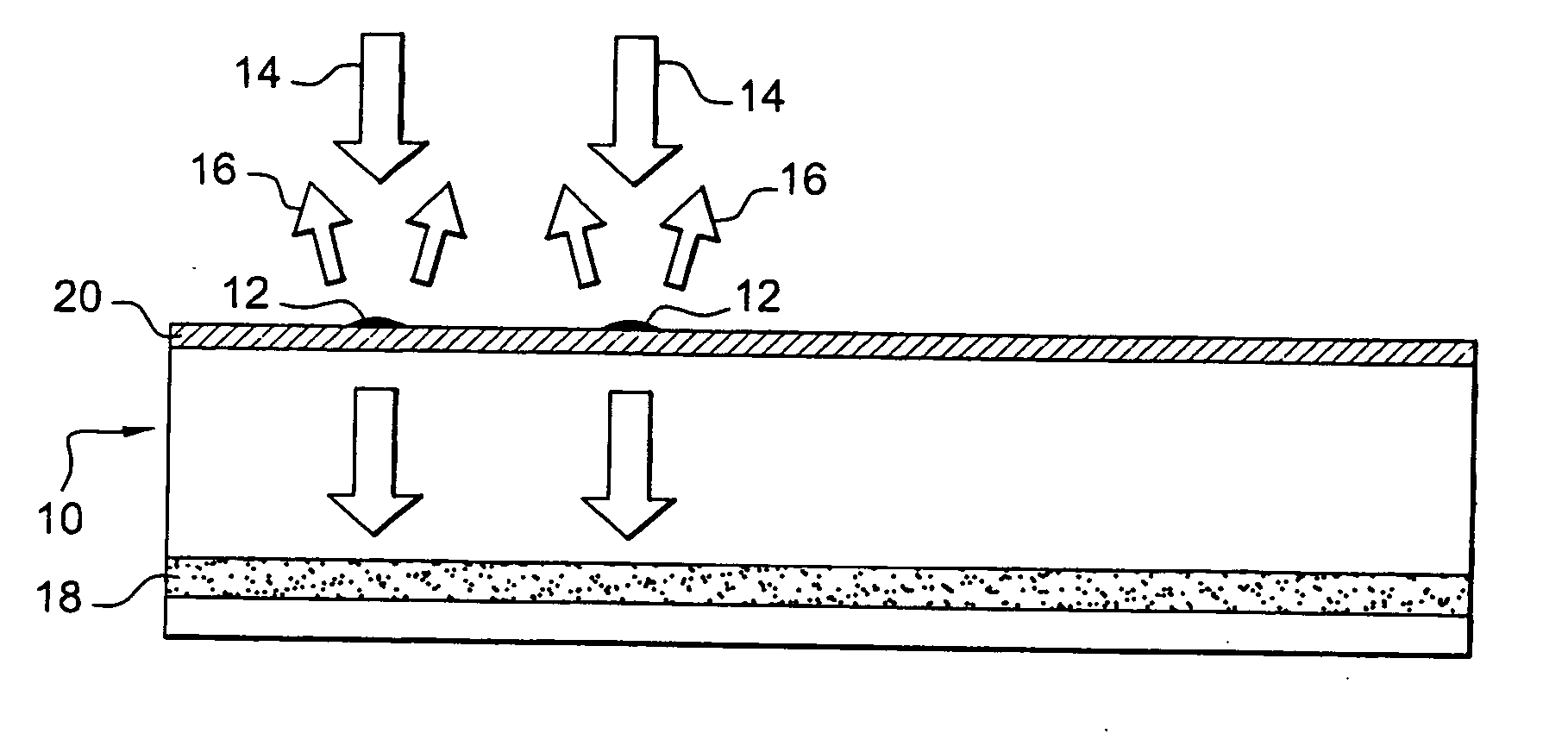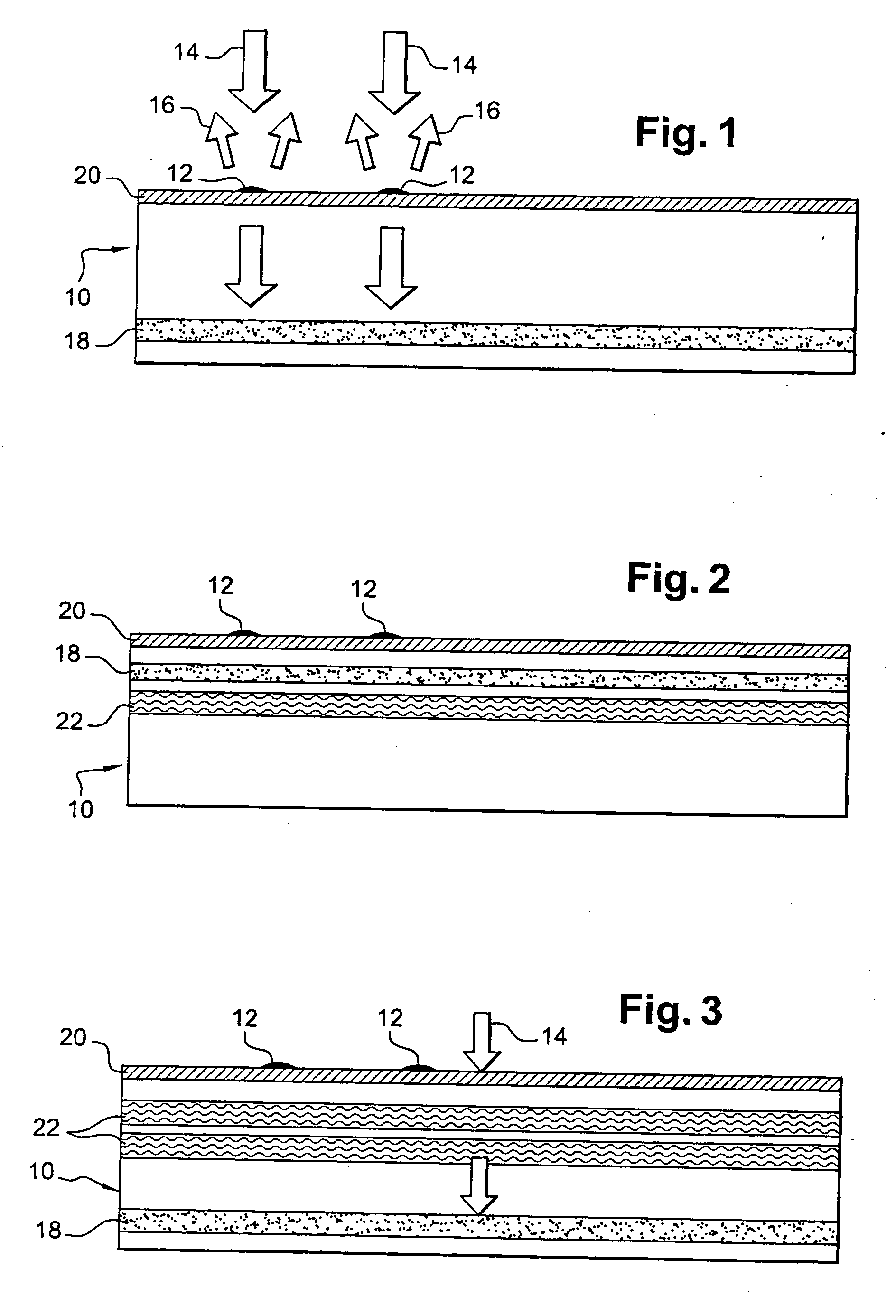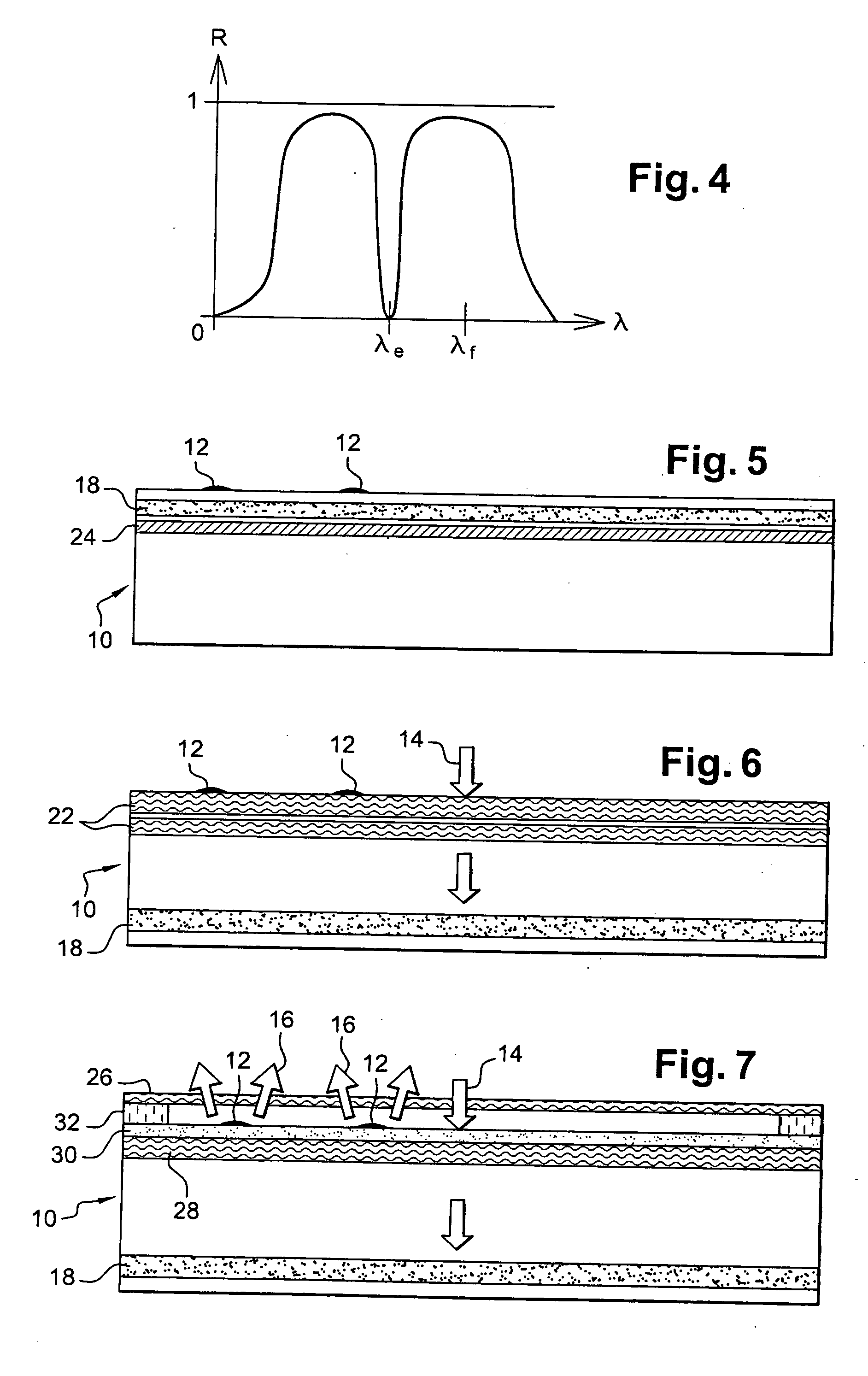Support device for chromophore elements
a technology of support device and chromophore, which is applied in the direction of fluorescence/phosphorescence, instruments, material analysis, etc., can solve the problems of likewise troublesome separation and difficult separation, and achieve the effect of simple, effective and inexpensiv
- Summary
- Abstract
- Description
- Claims
- Application Information
AI Technical Summary
Benefits of technology
Problems solved by technology
Method used
Image
Examples
Embodiment Construction
[0039] In FIG. 1, reference 10 is an overall reference for a support of the invention, which in this embodiment is constituted essentially by a plate of material having a refractive index n, with a top face for carrying chromophore elements 12, e.g. chemical or biological molecules as mentioned above, and which are secured in an array on the top face of the support 10.
[0040] These chromophore elements 12 are illuminated by excitation light 14, generally monochromatic light or narrow spectrum light, possibly polarized (laser light), and at an angle of incidence that is accurately defined and that is often substantially perpendicular to the surface of the support 10, and in response, these chromophore elements 12 emit fluorescence 16 at a wavelength that depends on the nature of the chromophore elements 12, and that is longer than the wavelength of the excitation light 14.
[0041] The intensity of the fluorescence emitted by the chromophore elements 12 is very weak compared with that ...
PUM
 Login to View More
Login to View More Abstract
Description
Claims
Application Information
 Login to View More
Login to View More - R&D
- Intellectual Property
- Life Sciences
- Materials
- Tech Scout
- Unparalleled Data Quality
- Higher Quality Content
- 60% Fewer Hallucinations
Browse by: Latest US Patents, China's latest patents, Technical Efficacy Thesaurus, Application Domain, Technology Topic, Popular Technical Reports.
© 2025 PatSnap. All rights reserved.Legal|Privacy policy|Modern Slavery Act Transparency Statement|Sitemap|About US| Contact US: help@patsnap.com



